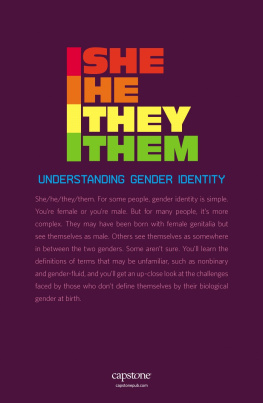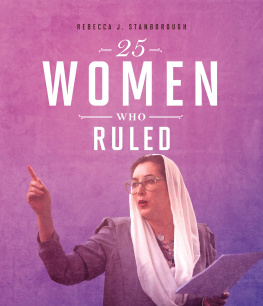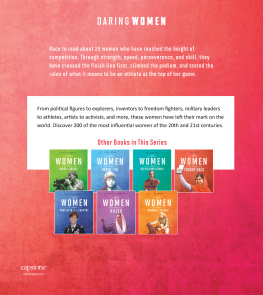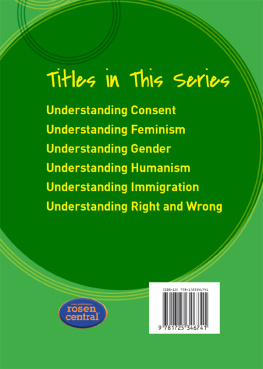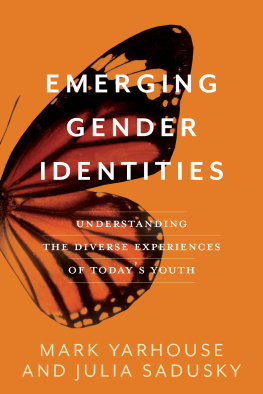Rebecca Stanborough - She/He/They/Them: Understanding Gender Identity
Here you can read online Rebecca Stanborough - She/He/They/Them: Understanding Gender Identity full text of the book (entire story) in english for free. Download pdf and epub, get meaning, cover and reviews about this ebook. year: 2020, publisher: Capstone, genre: Politics. Description of the work, (preface) as well as reviews are available. Best literature library LitArk.com created for fans of good reading and offers a wide selection of genres:
Romance novel
Science fiction
Adventure
Detective
Science
History
Home and family
Prose
Art
Politics
Computer
Non-fiction
Religion
Business
Children
Humor
Choose a favorite category and find really read worthwhile books. Enjoy immersion in the world of imagination, feel the emotions of the characters or learn something new for yourself, make an fascinating discovery.
- Book:She/He/They/Them: Understanding Gender Identity
- Author:
- Publisher:Capstone
- Genre:
- Year:2020
- Rating:3 / 5
- Favourites:Add to favourites
- Your mark:
- 60
- 1
- 2
- 3
- 4
- 5
She/He/They/Them: Understanding Gender Identity: summary, description and annotation
We offer to read an annotation, description, summary or preface (depends on what the author of the book "She/He/They/Them: Understanding Gender Identity" wrote himself). If you haven't found the necessary information about the book — write in the comments, we will try to find it.
She/He/They/Them: Understanding Gender Identity — read online for free the complete book (whole text) full work
Below is the text of the book, divided by pages. System saving the place of the last page read, allows you to conveniently read the book "She/He/They/Them: Understanding Gender Identity" online for free, without having to search again every time where you left off. Put a bookmark, and you can go to the page where you finished reading at any time.
Font size:
Interval:
Bookmark:

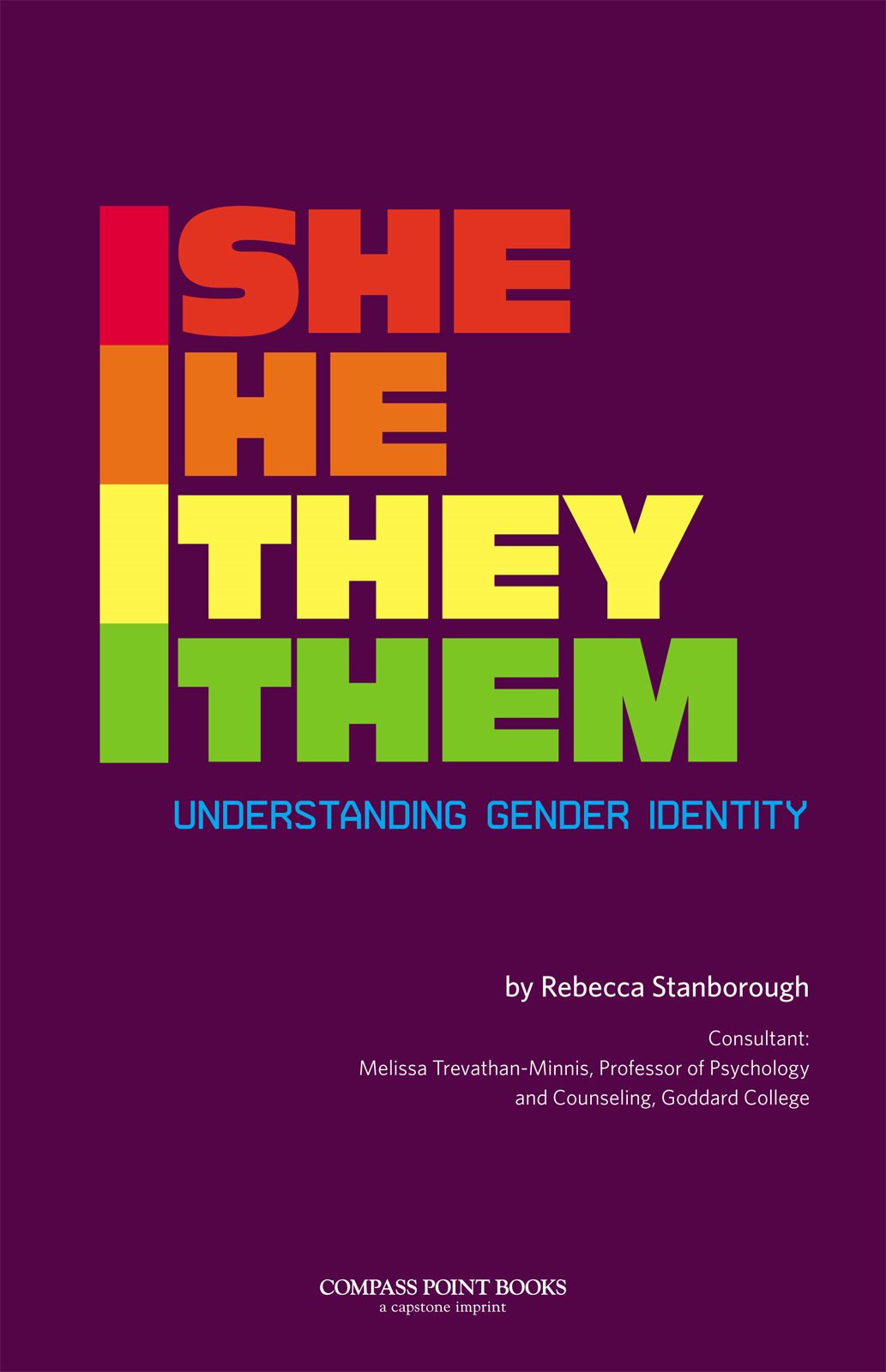

It was a hard lockdown.
Students huddled in secured locker rooms, practicing how to keep safe if an active shooter entered the school. Boys huddled in the boys locker room. Girls huddled in the girls locker room.
One student was left to face a wall in the hallway, completely alone.
The teachers in the Stafford County, Virginia, middle school didnt know which locker room the student should use. The student was transgender. And because the school district had no clear guidelines about where she belonged, that student was sent into the hallway by herself.
If there was someone armed, she told a local newspaper, I wouldve been the first one gone.
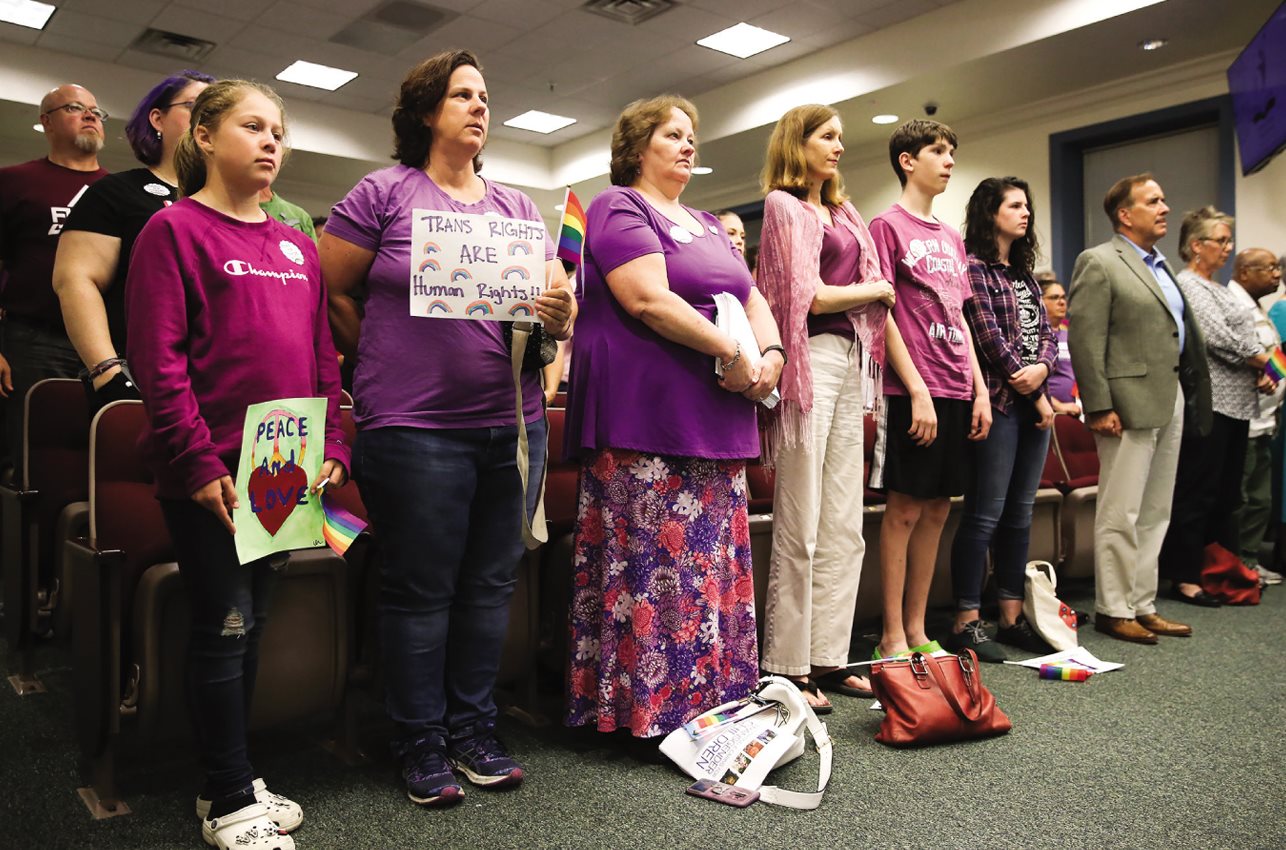
The separation of a transgender student from other students during an active shooter drill led a large group of supporters to attend a school board meeting to protest the schools actions.
This event was a drill, not an actual active shooting. But the fact remains: a transgender student was left in a hallway on her own because the school district had not made it clear that her right to safety was as important as every other students.
Across the nation, conflicts over the civil rights of transgender people are taking place in businesses, schools, hospitals, and government agencies.
Newspapers are full of headlines like these:
Transgender HS Student Says He Was Removed from Prom King Ballot
Atlanta Journal and Constitution, March 21, 2019
Administration Moves to Revoke Transgender Health Protection
The Washington Post, May 24, 2019
Supreme Court to Rule on Gay, Transgender Employment Rights
Wall Street Journal, April 22, 2019
Yet, even as transgender rights are being challenged in courts and classrooms, some parts of U.S. society seem to be making strides toward accepting gender differences. Some people are fighting for progress on these rights, while others are pushing back.
People understand more now then ever before about the science of sex and gender. Social media have created new ways for people of different genders to express themselves. Customers are questioning product categories like girl toys and boy toys. And athletes are breaking gender barriers in lots of different sports.
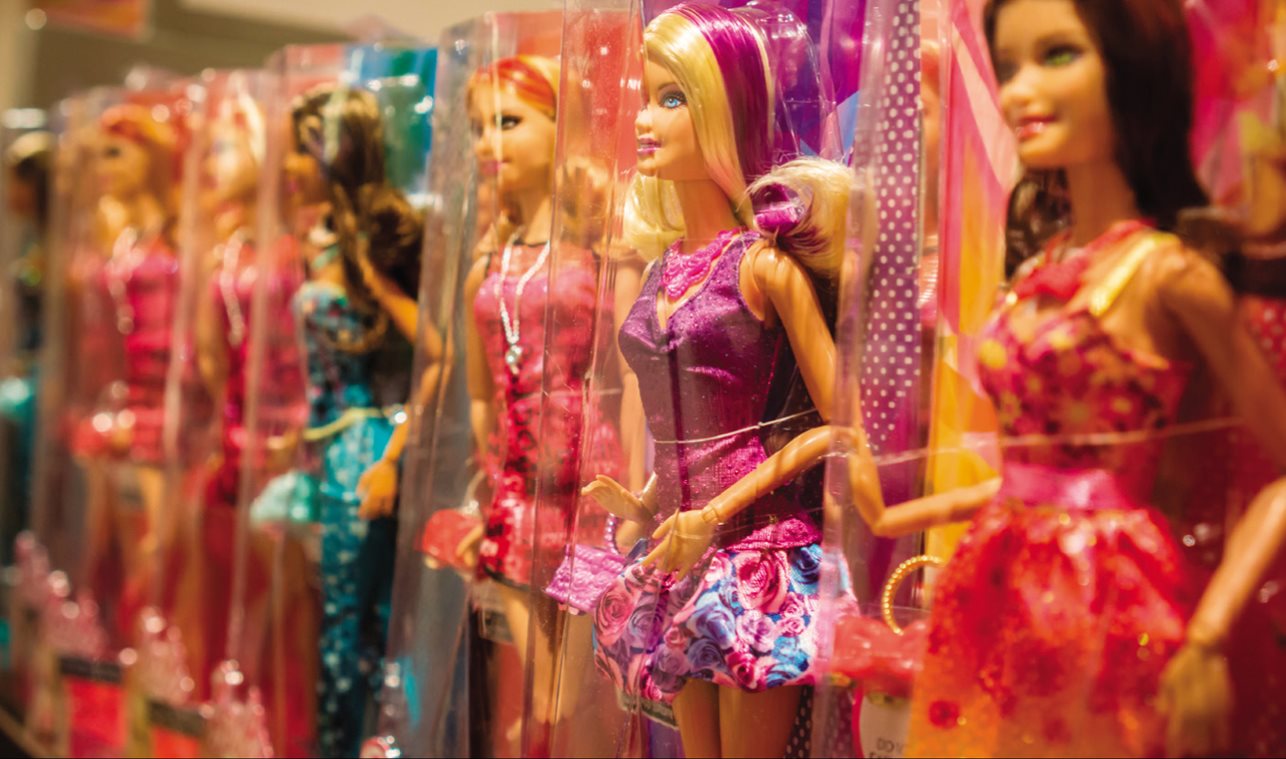
Customers may be questioning boy and girl toy separation, but girl-focused aisles full of dainty dolls and boy-focused aisles teeming with trucks are still commonplace.
For some people, that feels like good news. For others, it may feel like the world is changing too fast.
Even language is changing. The gender revolution has given rise to a new vocabulary. Transgender, cisgender, gender-fluid, genderqueer, nonbinary, ze, and zir these words represent different ways of describing ourselves and each other.
Heres a quick look at some of the terms that are making news:
- Cisgender: a person whose gender identity matches the sex they were assigned at birth.
- Gender-fluid: a person whose gender identity changes at different times.
- Genderqueer: a person whose gender identity is not limited by societys gender norms.
- Gender nonconforming: a person whose gender expressionsuch as clothing and behaviordoesnt follow societys norms.
- Nonbinary: a person whose gender identity is neither strictly male nor female, as our society defines those genders.
- Transgender: a person whose gender identity does not match the sex they were assigned at birth.
Are these words just a social trend? Or might society finally be acknowledging identities that have been part of the human experience all along?
People in the U.S. are hotly debating what should be done about the needs of people who dont fit into tidy gender boxes. Many government policieslike the Virginia school districtsdo not protect the rights of transgender people. And that means people are being left out and put in danger.

All over the United Statesand in many places worldwidepeople have gone on the march in support of equal rights for gay and transgender people.
Why does it arouse such strong feelings when someone assigned one gender at birth feels that they belong to another gender? Or that they dont relate to any one gender? Thats what will be explored in this book, along with cultural conflicts that have arisen with the recent expansion of our understanding of gender identity.

Gender identity is the sense of ones own gender. For some people, naming their gender is relatively easy: they see themselves as men or women, boys or girls. But those two categories dont work for everyone. Some people see themselves as somewhere in between. Or both. Or neither.
Its important to point out that gender is a core part of overall identity, but it isnt the only part. Other parts of identitylike race, , sexual orientation, faith, social class, and family connectionsmight be just as important to a persons sense of self.
Because of the way our society is organized, gender identity and gender expression have a powerful influence on peoples lives. Gender can determine a persons friends, toys and games, fields of study, and even the jobs and professions that they choose. It can even influence how much money people are likely to make as adults.
In How to Understand Your Gender, authors Alex Iantaffi and Meg-John Barker say that gender is bio-psychosocial. That is, your gender is influenced by your biology, your psychology, and your society.
Your understanding of your gender is shaped partly by your biology. It may be influenced by your body parts and the chromosomes and hormones inside you. You have an innate understanding of who you are. That understanding may or may not line up with how other people see you. It may or may not line up with the body you see when you look in the mirror.
Your gender is also influenced by your social surroundings. Your family, friends, school, church, neighbors, people on social mediaeven strangersall have a lot to say about how you should act based on how they see your gender. These social rules and opinions may or may not make sense to you.
For the most part, gender identity stays the same over a lifetime. But it is possible that as your body, mind, and culture change, how you see your gender might also change over time.
Lets look first at the bio part of the bio-psychosocial gender equation.
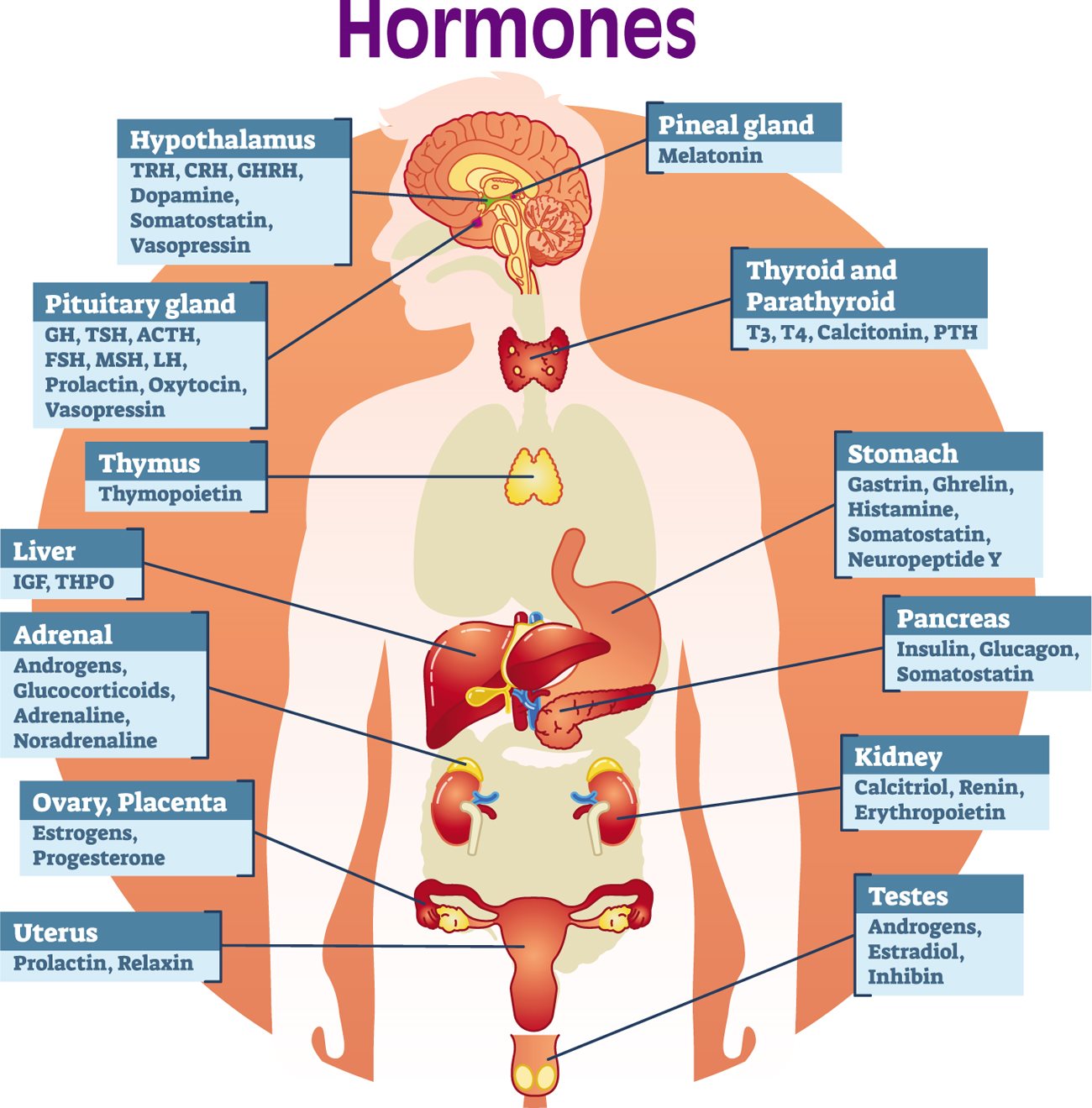
Font size:
Interval:
Bookmark:
Similar books «She/He/They/Them: Understanding Gender Identity»
Look at similar books to She/He/They/Them: Understanding Gender Identity. We have selected literature similar in name and meaning in the hope of providing readers with more options to find new, interesting, not yet read works.
Discussion, reviews of the book She/He/They/Them: Understanding Gender Identity and just readers' own opinions. Leave your comments, write what you think about the work, its meaning or the main characters. Specify what exactly you liked and what you didn't like, and why you think so.

